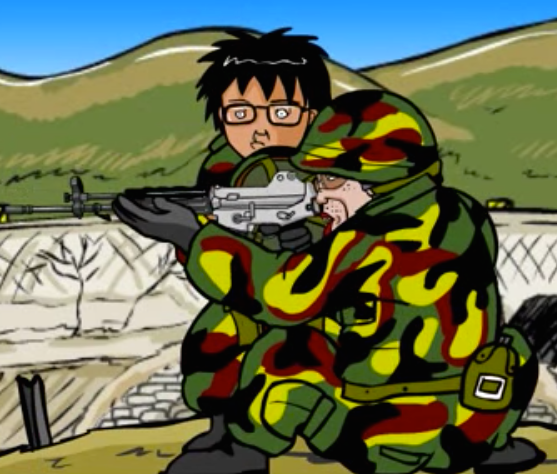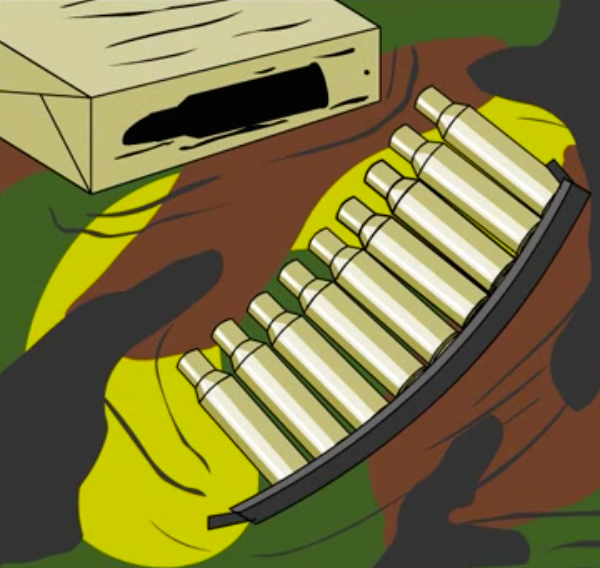ROK Military’s Obsession with Brass Collecting
An odd product that has appeared on Republic of Korea (ROK) Army K1A and K2 rifles in recent years is this brass catcher. Outside of a few dedicated reloaders in the United States, brass catchers are very seldom used at all anywhere else in the world. However in the ROK army, spent brass has a much higher importance than in most other militaries. Soldiers are required to turn in every piece of brass that they fired during a training regime or else face severe consequences. The reasoning behind this is the army’s strict control over ammunition consumption and reloading ammunition. Behind that regulation has to do with serious problems the ROK Army has with hazing, suicide rates, and soldiers making off with rounds for criminal activities. Thus, ROK soldiers have to turn in every single casing fired while on a live fire range, confirming it by also counting every single one. Many of us in the Military or LE are used to long lines of “Police Call”, where we would line up after a training event, sweeping the grounds for brass, collecting it and turning it back in. However the difference was that we didn’t count every single case when we turned them, it was enough to make the range reasonably cleaner than when we arrived at it.
From my perspective, I am curious as to how much this obsession with brass collecting impacts actual training. I understand that there is a real need to safeguard ammunition from criminal or suicidal usage, but at what cost to the soldiers? An army needs men who can fight well, not men that are professional brass pickers. As mentioned in the Business Insider article linked above, the ROK Marine platoon that the author was partnered with stayed at the range several entire hours extra due to three spent rounds that hadn’t been picked up yet. I’ve personally spent a colossal waste of time picking up trash and brass at ranges in the Marines, but mostly this had to do with Staff NCOs wanting to teach us a lesson because the platoon was misbehaving or not following their guide lines.
With the actual brass catcher mounted on a rifle, there is no way that an individual ROK soldier or Marine can get through more than 100 rounds of a course of fire without the brass catcher weighing down enough on the rifle to affect accuracy. In addition, I would be very curious to see if soldiers are so conditioned to keeping track of brass that they are essentially stunted to the point of not returning fire in an actual combat situation, because they don’t want to get punished for losing a piece of brass.
The article above mentions hazing being a concern of suicides and revenge killings, and the cartoon description I’ve attached below deals with a fair bit of hazing for entertainment value. To illustrate the degree to which hazing exists in the ROK Military, let me share a story. I know of this through a mutual friend of mine that served in the U.S. Army on the DMZ, partnered with a ROK soldier. They were both radio operators and were monitoring North Korean radio transmissions in the 1990s. During one of the days they were on duty, the ROK soldier made a very simple and small error in his transmission, maybe saying the time wrong, or calling in as the wrong call sign, but quickly correcting himself. Without hesitation, the ROK soldier’s section leader came storming in from the room next door, whipped the ROK radio operator out of his chair, and proceeded to break his nose in front of my mutual American friend. Now, I can say that similar events did happen while I was in the Marines, but the transgressions were much larger, and the physical assault wasn’t as near as injuring or public in the least (We call it “tree-lining”). The point of this story is to give our reader an idea of the kind of hazing that exists in the ROK Army, as compared to what you might think of hazing in the U.S. Military, it is almost on a whole different level.
To highlight this phenomena, I’ve shared an episode from a cartoon series entitled 연예인지옥 (Story of the Korean Army) that was popular in South Korea around a decade ago. Jump to the 6:20 mark for the rest of the post to make sense.
The cartoon series is about this kid that gets drafted into the army and is constantly beaten up by his squad-mates because he keeps getting everyone in trouble for his actions. In this episode the platoon goes to the range, and is short one brass case from being able to turn in their total ammunition expenditure at the end of the training session. In the screen grab below, notice the Kevlar being used to catch spent cases as they are flung out of the rifle.
Because of this the platoon is punished at the range very severely. Then at night, the main character is seen opening up a book where he has secreted away the spent piece of brass. He takes it out and whispers to himself about how awesome of a future rock star he is going to be, and how he’ll drill a hole through the case, wearing it as a necklace while on stage in front of crazy crowds of admiring fans below him as he sings.
However, his ambitious rant is quickly cut off by a squad-mate who walks in through the door, sees the spent case, and proceeds to wake up the whole platoon to thrash him again. Not only is this just any squad-mate, but his team leader or NCO that is directly in charge of him.
Whether you found the cartoon episode humorous or degrading, the point it illustrates about the highly important task of turning in brass in the ROK Army resonates deeply with many young and middle-aged Korean men watching the show. They would be intimately familiar with this predicament, having been conscripts in the ROK Army themselves.









